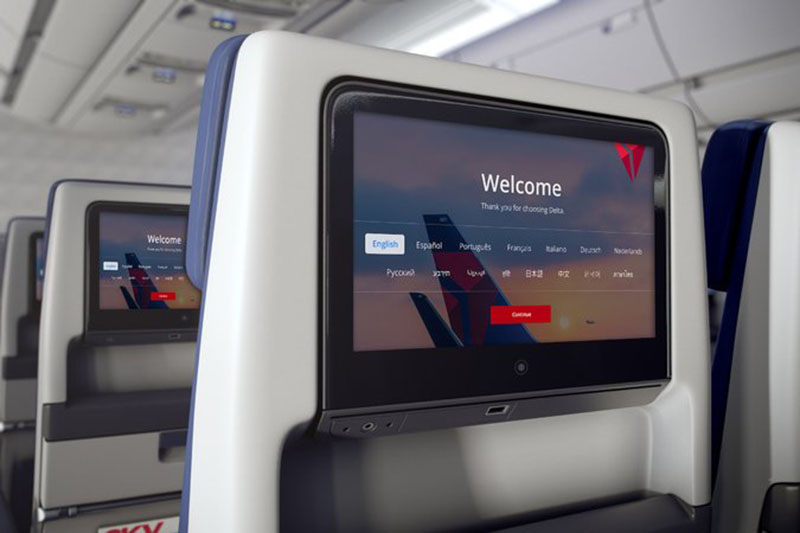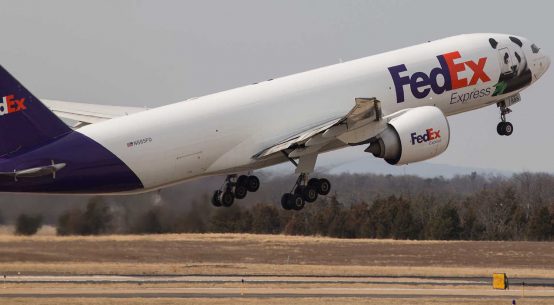
- Airlines Phasing Out Screens Because You Are All on Your Devices
- Calls Aren’t Allowed on Planes, but Regulators Consider a Warning Anyway
Airlines have been shrinking their seats for a long time, aiming to reduce the planes’ weight and squeeze in more passengers. But lately, some carriers have been going one step further in redesigning their seats: They’re taking away the seatback screens.
Formally called in-flight entertainment, the screens, and the preselected media on them, go a long way toward keeping passengers happy and distracted. The longer the flight, the more useful the seatback entertainment becomes.
But those entertainment systems are expensive to install. They can cost $10,000 per seat, estimated Dan McKone, managing director and head of the travel and transportation practice at the consulting firm L.E.K.
They also add bulk and weight to seats and quickly become technologically obsolete, especially because most Americans are now flying with at least one mobile device, said Henry Harteveldt, travel industry analyst and co-founder of Atmosphere Research Group.
“Some airlines are looking at this from the standpoint of cost savings by removing the hardware,” he said. “They reduce the weight of the aircraft, and they reduce the expense associated with maintaining that equipment.”
American and United Airlines are phasing out screens on new short-haul aircraft in favor of content offerings that passengers can stream from their personal devices.
The decision on whether to update the screens, Mr. McKone said, is mainly economic. “I think you’re going to continue to see increasing economic pressure not to replace I.F.E., particularly on the shorter-haul fleets,” he said. Mr. McKone predicted that more domestic flights in the future would offer content streaming on a bring-your-own-device model.
Some travelers are happy to say “good riddance” to the seatback screens. Lindsay Renfro, an associate professor at the Mayo Clinic, is among them. She travels about once a month for her job developing clinical trials for cancer research and views seatback entertainment as something of a redundant amenity.
“There are screens everywhere else in life,” she said. “I know that when I am flying and I look around me, people are by and large using personal devices, even when a seatback screen is available to them.”
That is one of the reasons Hawaiian Airlines is going without seatback screens in its new A321 neo planes, its chief commercial officer, Peter Ingram, said.

“With the 321, we recognized a couple of things that are changing in the environment around us that really informed our decision,” he said. “The majority of people are showing up with a device of their own, and they’re ignoring the devices we offer in-seat.” He added that the rapid pace of technological change meant an installed entertainment was soon obsolete.
“We’re focused on the fact that most people are bringing devices on,” Mr. Ingram said.
But industry experts say airlines risk alienating those travelers who do not want to rely on their own device to be entertained while they fly.
Patrick Ligonde, a self-proclaimed “airplane nerd,” travels with his smartphone for his job in airline ground operations. But when he has to fly from his home base in Philadelphia, he said, he makes sure the seats he purchases have seatback screens, even going so far as to research the aircraft configuration before making a seat selection.
“I try to use the seatback entertainment as much as possible,” he said. “From a passenger perspective, it makes it easier to have the monitor right there rather than having to use my own device.” One other advantage, he said, is that he does not arrive at his destination with a dead battery.
Mr. Harteveldt said his company’s research indicated that many road warriors had the same preference. “Business travelers have said there’s no room to have a smartphone on their tray if they’re working on a laptop, or if they’re using a tablet or smartphone for work, it’s difficult to use that for watching entertainment. Having the separate screen is a plus for them,” he said.
Some airlines are betting that they can peel away market share from their competitors by catering to travelers like Mr. Ligonde, making in-flight entertainment a brand differentiator. In 2017, Delta rolled out free in-flight mobile messaging, and the airline is in the process of installing new screens and making more content available in-flight.
“As we look at the way they live their life on the ground with more and more media at their fingertips, we’re looking to replicate that up in the sky,” said Andrew Wingrove, Delta’s managing director for product strategy and customer experience. “We believe strongly in having that extra screen for customers in the seatback.”
Alaska Airlines also started offering free in-flight messaging last year, along with faster Wi-Fi. JetBlue Airways, which has made in-flight entertainment a crucial part of its brand image since its debut, is investing in new entertainment systems for its A320 and A321 planes, said Mariya Stoyanova, the airline’s director of product development.
“When we took off flying in 2000, we had live TV in every seat. That was something unheard-of at the time,” she said. “That’s part of our brand commitment.”
Some airlines are also investing in content, even commissioning branded video material to accompany the assortment of movies, television shows games and other media that passengers can consume during flights.
“We have content on our Fly-Fi hub that’s kind of like an in-flight magazine,” Ms. Stoyanova said. She said JetBlue was working with the media company PureWow to create branded content, including short videos with travel-related tips and advice from flight crew members. “We’re trying to make it relevant to the customers,” Ms. Stoyanova said.
Michael Keating, co-chief executive of Ink, which produces in-flight magazines, also develops custom video content for 40 percent of its more than 25 airline clients worldwide. By the end of 2018, he predicted, that number will be up to 60 percent. “The key thing for the airlines,” he said, “is to engage with their passengers.”
The airlines rely on their in-flight media offerings not only to foster brand loyalty, but also to serve a more practical need: distracting tightly packed economy-class passengers.
“A lot of it is exactly for that purpose — it keeps the customers occupied and in their seats,” said Robert W. Mann, an airline industry consultant. “It’s incredibly useful, and the longer the flight gets, the more useful it is.”
- Read the original story on NYT
.









